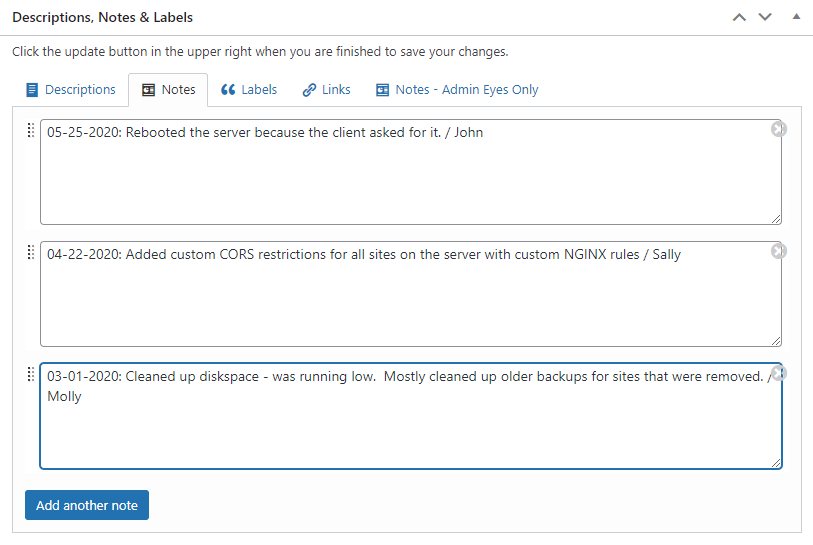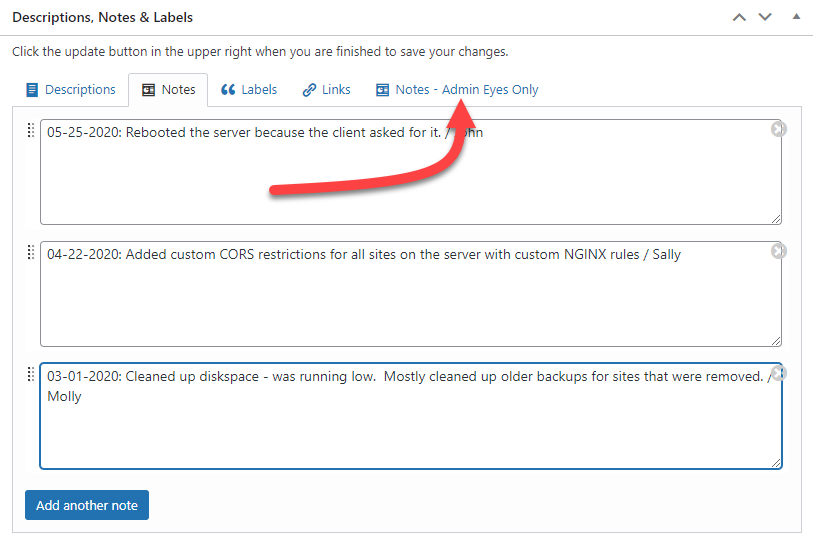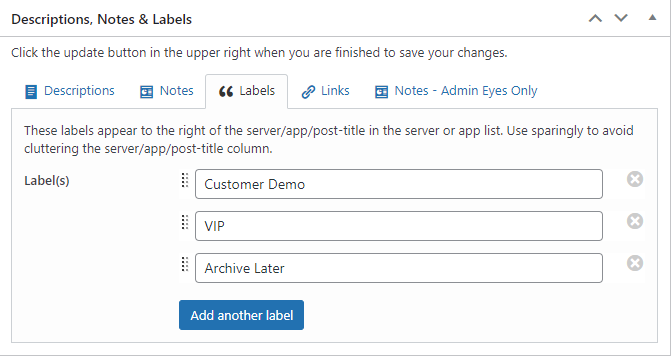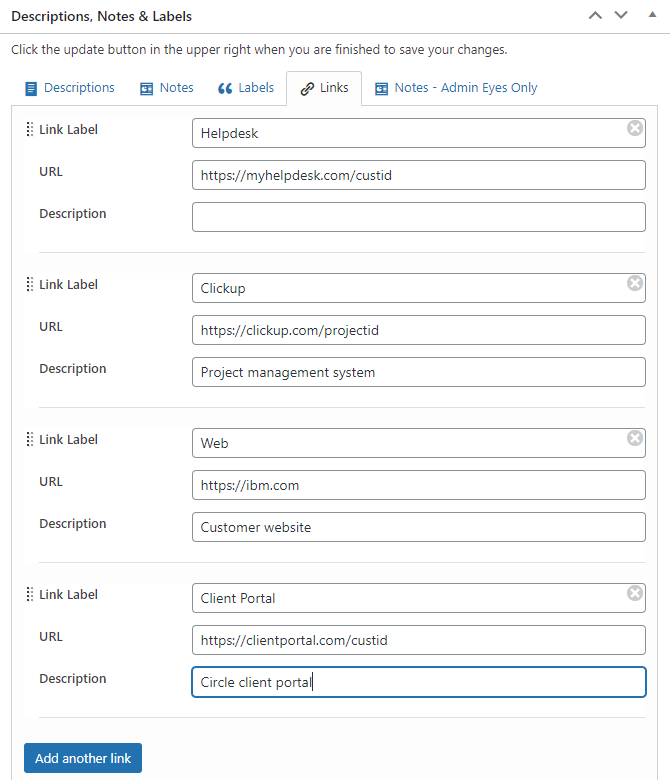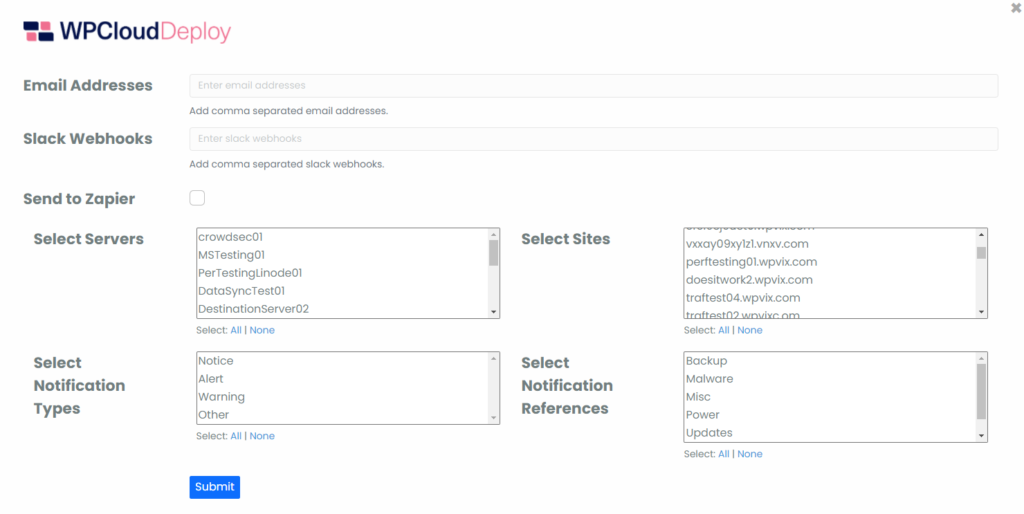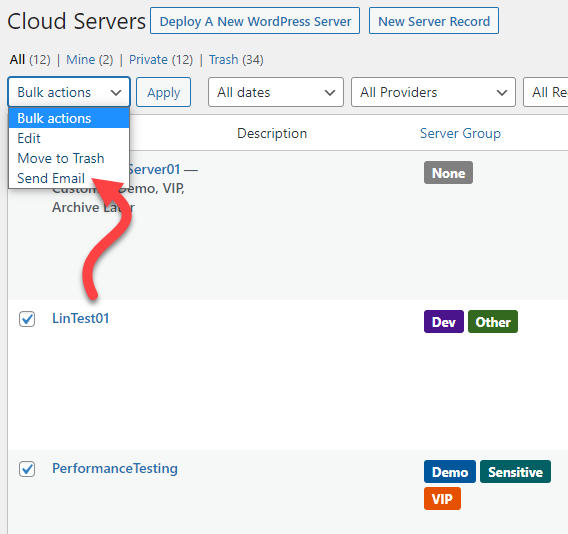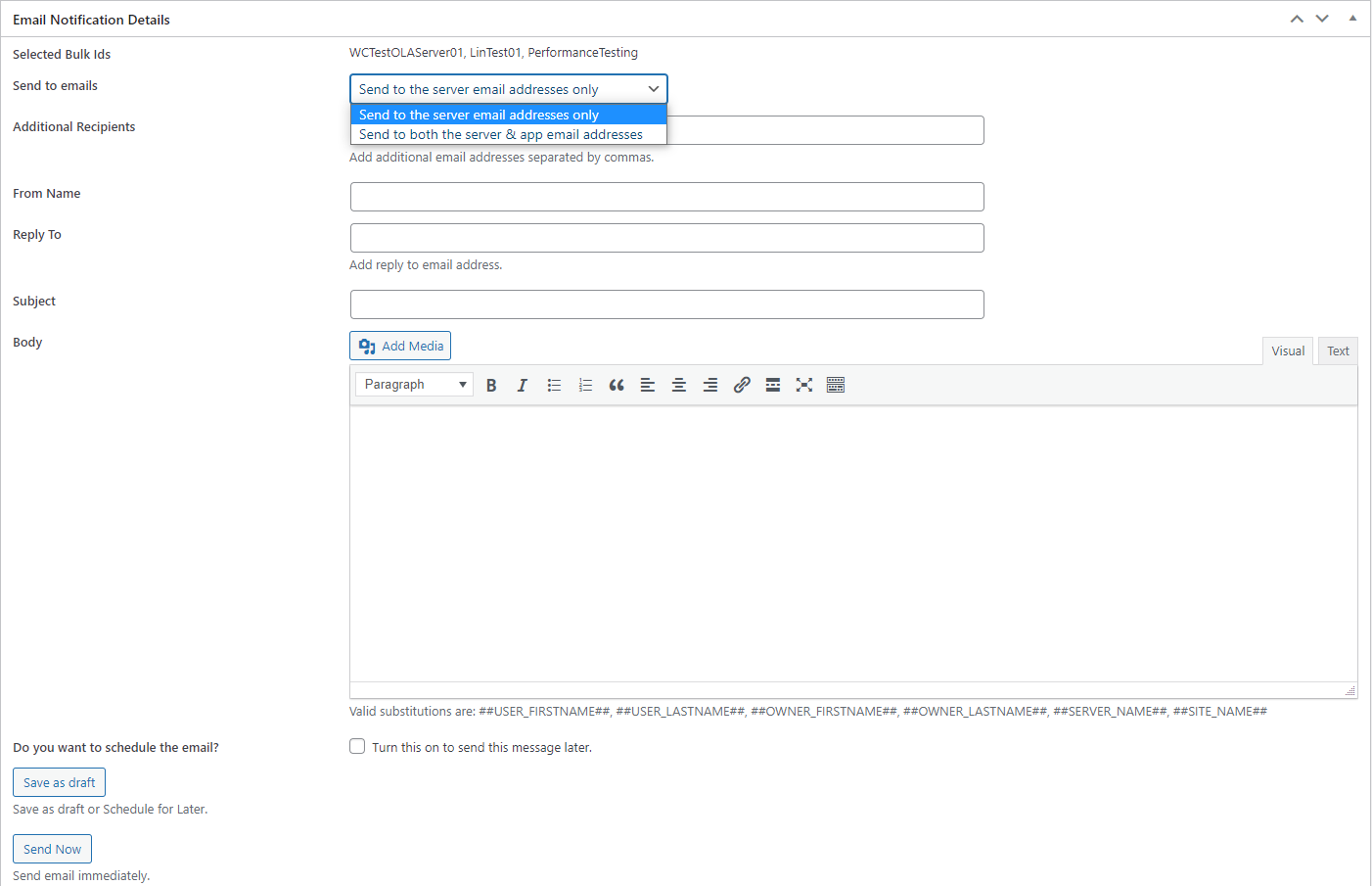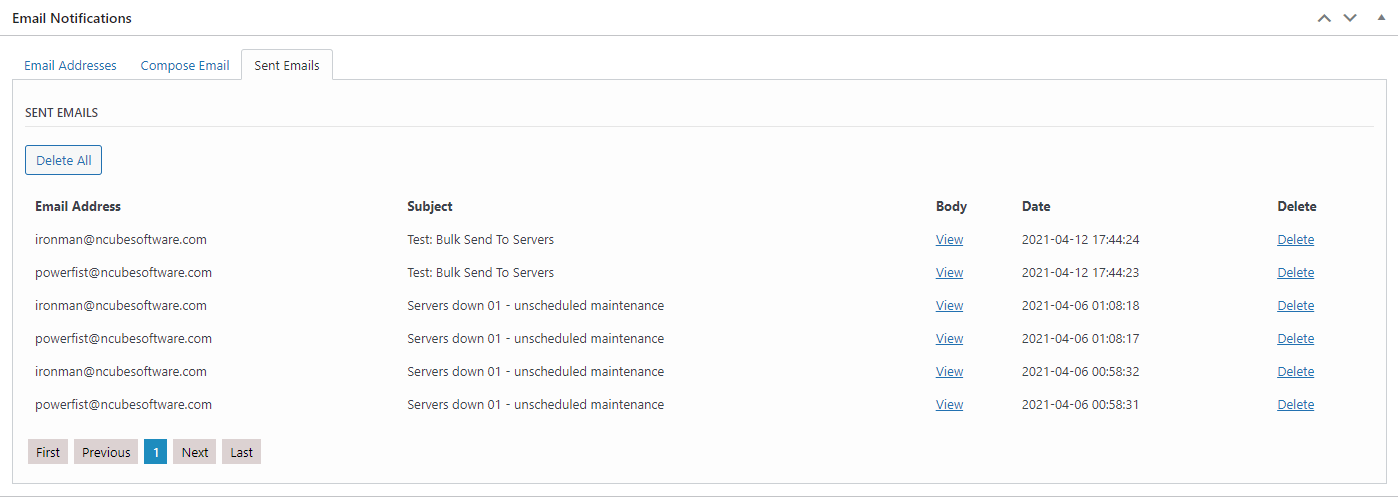If you’re running a WordPress focused agency that manages more than a dozen servers and/or more than 25 sites, you know that you have a different set of organization and customer management issues than someone who’s running just two or three servers or a few sites.
To help with these organization and customer management issues we’ve built in a group of features that we’re calling a MicroCRM. We’re not sure if “MicroCRM” is actually a thing in the CRM world but that’s what we’re calling these features.
Most people think of a “CRM” as a Customer Relationship Management system, Marketing Automation system or some sort of email contact marketing system. The MicroCRM features In WPCD are akin to the first idea- a way of managing your WP server-and-site client relationships; but only as needed for managing your WordPress servers and sites for them.
Because the features are tightly focused and cover only a couple of functional areas, we’re referring to them collectively as a MicroCRM.
So what do these MicroCRM features offer and what can they collectively do for you and your customers?
Feature Types
We classify the MicroCRM features into two groups – Organization and Communication.
In the organization group we have notes, links, labels categories, sorting & filtering and integration with common WordPress customization plugins. As with any CRM, they help you keep track of many things at once. Combined, these features are the equivalent of listing all your servers and sites in a spreadsheet with a ton of additional columns for extended data.
In the Communication category we have flexible emailing and other communication features going out to customers, technicians and other stake holders.
Combined, they create a MicroCRM that makes managing servers and sites easier, especially when you have multiple admins operating as a team.
Organization Features
The organization features in WPCD help you keep order in large lists of servers and sites. If you have only a couple of servers and a few sites, these aren’t really going to be that useful. But if you’re managing servers and sites for a lot of customers or you’re running a WaaS, they’re going to be indispensable.
1. Track Changes
Most WordPress dashboards give you the ability to add simple notes to a server and some even allow you to add notes to a site. However, most give you a single field or maybe a couple of fields.
WPCloudDeploy gives you a lot more flexibility by providing:
- A complete set of note taking capabilities
- Notes for multiple security levels
- Notes for both SERVERS and SITES.
Something like this might not seem important at first; but when working on a team and managing a lot of servers and sites, having a history of notes made by disciplined professional technicians can be a godsend weeks or months after the fact.
You can save yourself and your clients a bunch of time and money by simply maintaining a good history directly on your server records.
Eagle eyed readers will notice that there are TWO NOTES tabs in the image above.
Notes in the first tab will be visible to anyone who is classified as the “owner” of a server – which could be a client. However, the ADMIN NOTES tabs are only visible to WPCD admins – these are not visible by customers, or anyone else who are not assigned ADMIN capabilities.
2. Labels
Labels are great when you need to make a note that is visible to anyone just scrolling down the list of servers and sites. This is slightly different from color coded categories (discussed next).
The best use of labels is when you need to note something on a server or site that is just a single word or two and you might only need to do it for a few servers or sites.
When scrolling through your server or site list, these labels look like this:
3. Color Coded Categories
Categories on the other hand, look like this:
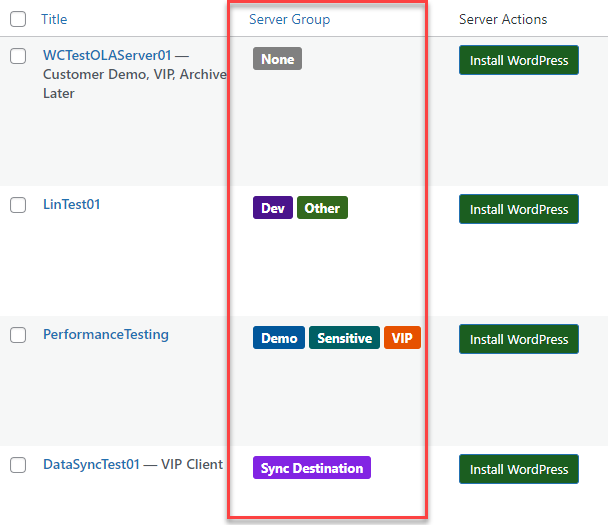
In WPCD we actually call these “Groups” – Server Groups and App Groups. But if you’re very familiar with WordPress they are basically categories on a custom post type.
There is a lot of overlap between LABELS and GROUPS. However, we recommend that GROUPS / CATEGORIES be used when you’re likely to need them for more than a couple of records and/or need to be able to filter. You cannot filter your server and site list using labels – you can only do that with categories/groups.
4. Outbound Links
Your WordPress management tools do not live in a bubble. They are just one tool in an ecosystem of tools consisting of your accounting system, help desk, CRM, project management system and more.
WPCD helps you quickly navigate from it to those other tools by allowing you to create one-click links for each server and site.
Once you start using these you’ll wonder how you ever worked without them.
With this feature you’re just one click away, directly into your help desk, CRM, project management tool, bug tracking system and more. You can even open a support ticket or access your list of tickets directly if your support system has direct URL access to customer ticket lists.
As you can see in the above image, you just set them up with labels and a link. Then you can access them directly in your server or site list:
5. Long & Short Descriptions
Every WordPress management dashboard gives you the ability to enter at least a short description for sites and servers. WPCD gives you two description fields. The short one will show up the server and site lists. The long one can be used to add additional keywords to the server or site which can then be used in full-text searches later.
Communication Features
There are two groups of communication features that are needed in a MicroCRM for WordPress Management. For simplicity we’ll just call them type 1 and type 2.
- Type 1 Notifications are those created when something out of the ordinary is occurring on a server or site. Generally, these go to your technicians but might also to to your customers or other interested parties. They might even get delivered to another system for automated handling.
- Type 2 Notifications are those created when something is scheduled to occur on a server or site and might negatively impact an interested party. These are generally advanced notices and are usually delivered via email.
Type 1 Notifications – When Bad Things Happen
When exceptions are occurring on a server or site, you usually want to be notified of them. Each server or site might require notifications to a different group of interested parties. And, depending on the event, you might even want notifications delivered via multiple methods.
To accommodate this, WPCD includes the ability to configure these types of notifications to be delivered via EMAIL, SLACK or pushed to ZAPIER for further distribution.
As many profiles as needed can be set up to ensure that only the appropriate parties receive notifications.
And, any notifications that have been sent are logged:

Type 2 Notifications – Proactive Messaging
Consider a situation where you have, say, 25 servers distributed over three providers. Now, assume that you get a notice from one of the providers about a maintenance window where servers might potentially go down. What do you do for your clients?
Generally, you want to keep your clients informed. So now you need to figure out which servers are impacted and the contact information for each client on the server. If you have multiple sites on each server, each belonging to a different customer, you better hope your CRM is update to date and cross-referenced with your server providers.
To help with this issue, WPCD includes the ability to tag each server and site with one or more users’ email contact information:
Then, when it’s time to contact the parties associated with a particular set of servers or sites, you just select them from the server or site list and compose an email:
Emails can be sent to just the users tagged on a server or users tagged on both servers and the sites located on them. Additionally, arbitrary 3rd parties can be CCed on all emails. And emails can be scheduled in advance which works well to create a sequence of reminder emails for a particular event.
And, of course, all of these emails are logged:
Other Organization Features
1. Search
So, you’ve got 50 servers , 200+ customers and 500+ sites, all scattered across the globe among a bunch of different cloud providers. AND all you have is the IP address for the site and you need to access the server, fast.
In any other system that would likely be a PITA. Not in WPCD.
Just type the IP address into the search box and hit enter. The server and all its history, access info and tools will pop right up for you.
You can search using the contents of other fields as well, including the server name, provider and more. Just type what you know into the search box and the chances are that the right servers and sites will pop right up for you.
2. Robust Sorting & Filtering
When dealing with large lists of servers and sites, you need tools to quickly filter and sort. WPCD does not disappoint since it uses standard WordPress CPTs.
Click a column name to sort. Use the many drop-downs at the top of the list to filter by providers, regions, groups, ip, owners, PHP version, cache status and more.
3. Data Segmentation & Compartmentalizing
If you have Government, Healthcare, Banking and other similar highly regulated clients, you might want to segment their data away from your other typical corporate clients. WPCD makes it easy to do that – just create a separate WPCD install on a separate server to manage those clients.
These separate installs can then be subjected to more rigorous security and audit procedures and more easily locked down to highly trusted technicians.
Or, you can use one installation to manage internal sites and servers and another to manage customers’ items.
And, of course, there are certain jurisdictional and cross-border data transfer restrictions that might force you to segregate data.
All WPCD licenses give you unlimited installs to enable exactly these types of segmentation and isolation scenarios.
4. Integration with WordPress customization tools
One of the most powerful features of WPCD is its integration with well-known WordPress tools such ACF, Admin Columns and more.
With these tools you can add your own fields to servers and sites to collect even more information. Then customize the main server and site lists with your custom columns to help you sort and filter. For example, you might want to add a field to store a customers’ logo. Or add fields to record customers and contacts’ full physical address and other particulars.
Or, you might decide to go whole-hog and create a full inventory of each servers’ hardware and software specs.
And you can do all this without any custom code!
Wrapup
The MicroCRM features in WPCloudDeploy are ideal for WordPress focused agencies – especially those with more than a dozen servers and more than 25 customer sites. The larger the number of servers and sites being managed, the more important these features become for keeping track of things, contacting customers in a pinch and just generally staying on top of things.
As with most CRMs, they require a level of discipline in order to be useful – if your technicians don’t update things as they happen then the whole shebang becomes useless.
But, for disciplined agencies, they will save a whole bunch of time and money.
Was This Article Useful? Or do you have questions or comments about it (or our products & services)? We'd love to hear from you!
Automatic Notification Of New Articles
Sign up to get automatic notifications of new articles. This is a different list than our standard list - you only get new articles once a week (usually on Mondays). No other emails will be sent unless you sign up for our general list as well.
Follow us on Twitter! We post a lot of cool things there first. To keep up, click the "X" below!


